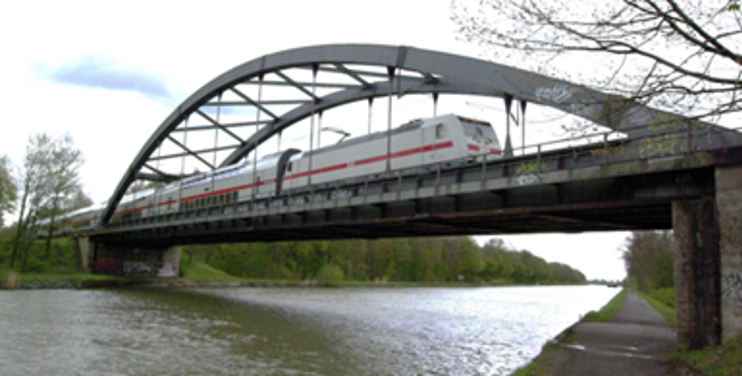| Project name | Digital shadows of the entire railway bridge network: model update using drive-by monitoring |
|---|---|
| Acronym | DbM-Update |
| Project partner |
|
| Grantor | DFG |
| Duration | 2026 bis 2028 |
|
Research field |
E+E (E+E > Energy + Environment I+I > Information + Intelligence M+M > Matter + Materials) |
| Project content |
The increasing speed and axle loads of modern trains and the high average age of railway bridges, often with damage due to inadequate maintenance, make the transport transformation a challenge. New trains can trigger resonances that cause strong vibrations, which can significantly shorten the service life of bridges and affect the stability of the track bed. The current assessment of bridges is either based on simulations, which are based on simplifying assumptions and only partially reflect the real vibration behaviour of the structures, or on comprehensive measurement campaigns, which, however, cannot be implemented on all thousands of bridges for practical and economic reasons. It is therefore necessary to develop a scalable and cost-efficient method that enables reliable network-wide statements to be made about the behaviour of railway bridges. The project's innovative approach involves creating a digital shadow – i.e., a realistic image – for each bridge, which is adjusted using real measurement data. To this end, sensors are attached to regularly scheduled trains (drive-by monitoring), which record the vibrations of the bridges as they traverse them. The data obtained is used to adapt digital bridge models so that they accurately reflect the real dynamic behaviour. In contrast to the use of measurement data from direct bridge monitoring, the use of drive-by monitoring measurement data has the advantage that the approach is scalable, i.e., it can be applied to thousands of bridges. The aim of the project is therefore to develop a methodology that is suitable for generating digital shadows of railway bridges throughout the network in order to then use these digital shadows to reliably predict important parameters, e.g., maximum bridge accelerations. The project is also investigating how detailed the models need to be in order to enable precise predictions on the one hand and to ensure efficient calculation on the other hand. In the long term, this approach will enable continuous monitoring of the bridge stock, allowing maintenance requirements and risks to be recognised at an early stage – even before closures or hazards occur. In addition, new trains and higher speeds can be tested virtually so that the railway companies can proactively adapt their infrastructure. |
Department of Civil and Environmental Engineering

research project DbM-Update
Digital shadows of the entire railway bridge network: model update using drive-by monitoring
research project DbM-Update
Digital shadows of the entire railway bridge network: model update using drive-by monitoring





